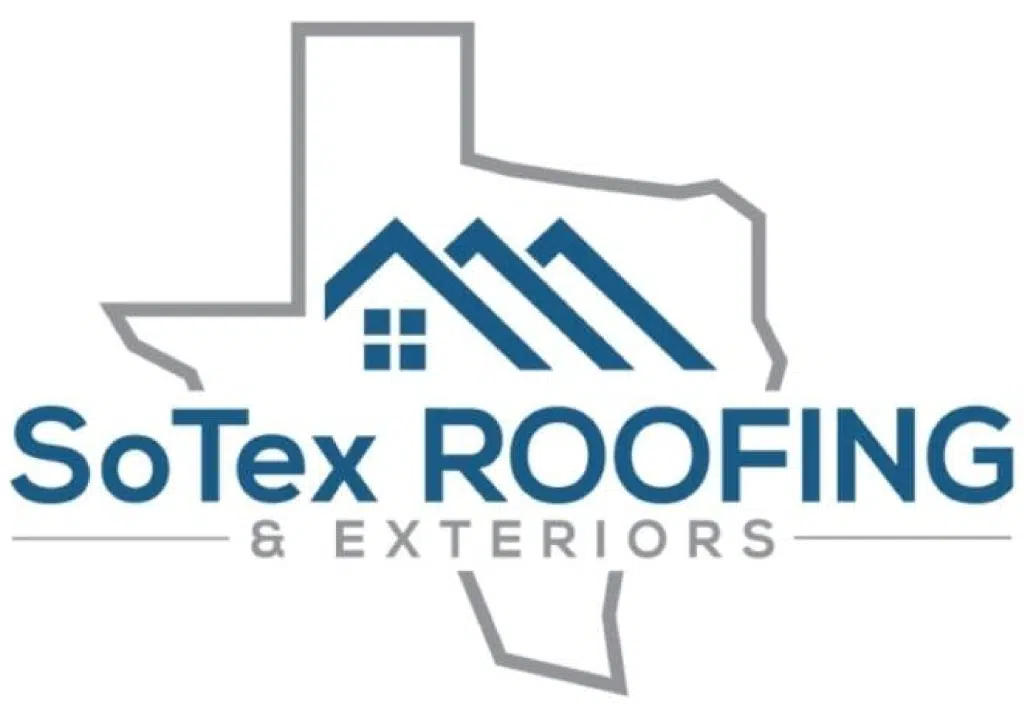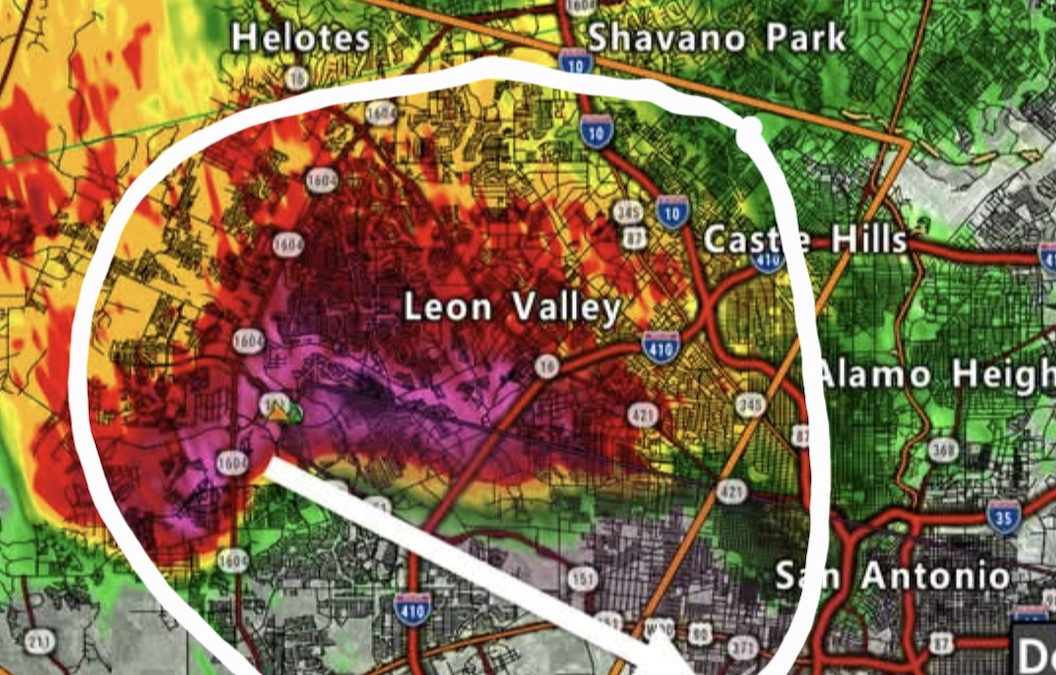Spring in Texas brings blooming bluebonnets, warmer temperatures, and unfortunately, severe weather. For homeowners across San Antonio and surrounding areas, hailstorms represent one of the most damaging natural events that can affect their properties. At SoTex Roofing and Exteriors, we understand the stress and uncertainty that follows when golf ball-sized hail bombards your home. This comprehensive guide to hail damage repairs will help you navigate the steps to take after a storm, understand your insurance options, and know when to call professionals.
Understanding the Impact of Hail in Texas
The Lone Star State consistently ranks among the top states for hail-related insurance claims. San Antonio, in particular, sits in what meteorologists call “Hail Alley,” making our homes especially vulnerable to this type of severe weather. When hail strikes, the damage extends beyond just your roof—siding, windows, gutters, and outdoor fixtures can all suffer significant impact. The severity of hail damage restoration needs typically depends on several factors including hail size (pea-sized versus golf ball or baseball-sized), storm duration and intensity, wind speed during the hailstorm, age and condition of your home’s exterior surfaces, and building materials used in your home’s construction.
Identifying Hail Damage to Your Roof
As a homeowner, being able to recognize potential hail damage can save you time and prevent further complications. After a storm passes and it’s safe to do so, you should look for signs like random damage patterns with no discernible direction, black spots where granules have been knocked away, shiny asphalt exposed where hail has struck, and soft spots that feel like bruises when gently pressed on asphalt shingles. Metal roofing damage often appears as dents and dings across metal surfaces, damaged paint coating, and punctures in severe cases. Tile and slate damage manifests as cracks, chips, or broken pieces, impact marks, and exposed underlayment. Remember, not all hail damage is immediately visible to the untrained eye. Sometimes the impact weakens the structural integrity of roofing materials without leaving obvious signs. This “hidden damage” can lead to leaks and deterioration months later if not properly addressed during hail damage restoration.
The Critical Timeline for Hail Damage Restoration
When it comes to hail damage repair, timing is everything. Within 24-48 hours after a storm, you should document the damage with photos and videos, cover any leaking areas with tarps to prevent water intrusion, contact your insurance company to report the damage, and reach out to a reputable roofing contractor like SoTex Roofing and Exteriors for an inspection. During the first week, you should meet with insurance adjusters and roofing professionals for damage assessment, review repair estimates and insurance coverage, and sign necessary paperwork to begin the hail damage restoration process. Long-term considerations include completing all necessary repairs before the next severe weather season, considering upgrades to impact-resistant materials, and establishing a regular maintenance schedule to keep your roof in optimal condition. Delaying hail damage repair can lead to secondary issues like water infiltration, mold growth, compromised insulation, and even structural damage to your home. What might have been a straightforward restoration can quickly escalate into a much more complex and expensive project.
Navigating Insurance Claims for Hail Damage Restoration
For many Texas homeowners, working with insurance companies represents the most challenging aspect of the hail damage restoration process. Most homeowner’s insurance policies in Texas cover hail damage, but deductibles, coverage limits, and claim procedures vary significantly. You should review your policy carefully, paying special attention to replacement cost versus actual cash value coverage, special hail damage deductibles (often higher in Texas), time limitations for filing claims, and documentation requirements. The claims process typically begins with filing promptly since most policies require notification within a specific timeframe. You should document the damage thoroughly with date-stamped photos and videos, be present when the insurance adjuster inspects your property, and consider getting professional backup by having a reputable contractor present during insurance inspections to help ensure all damage is properly identified. Before accepting any payment, carefully review the settlement offer to understand what’s covered. Common insurance challenges include adjusters who miss or underestimate damage, disputes over pre-existing conditions, disagreements about the necessity of full roof replacement, and delays in processing claims after widespread storm events. At SoTex Roofing and Exteriors, we have extensive experience working with insurance companies on hail damage repair claims. Our team can help you document damage properly and advocate for fair coverage based on our professional assessment.
Professional Hail Damage Restoration vs. DIY Repairs
After a hailstorm, some homeowners consider tackling minor repairs themselves. While this may seem cost-effective, professional hail damage restoration offers significant advantages. Professionals can provide comprehensive assessment to identify all damage including hidden issues. Reputable contractors use high-grade materials built to withstand Texas weather and offer warranty protection for their workmanship. They also bring insurance expertise, understanding how to document damage for maximum claim coverage, and have the training to handle the significant safety hazards that come with roofing work. While full hail damage repair requires professional expertise, homeowners can take some immediate steps while waiting for contractors, such as clearing debris from gutters and downspouts, placing tarps over severely damaged areas, documenting damage with photos and videos, and making temporary repairs to prevent water intrusion.
Choosing the Right Hail Damage Restoration Contractor
Not all roofing companies are equally equipped to handle hail damage restoration. When selecting a contractor, look for essential qualifications including local presence with a verifiable physical address, proper licensing and insurance, manufacturer certifications, positive reviews and testimonials, experience with insurance claims, written estimates and contracts, and reasonable deposit requirements. Be wary of red flags such as storm chasers who appear only after major weather events, pressure tactics or “today only” offers, contractors who offer to pay your deductible (which is illegal in Texas), absence of proper credentials or references, and vague contracts or estimates.
The Real Cost of Ignoring Hail Damage
Many homeowners mistakenly believe that minor hail damage isn’t worth addressing. This common misconception can lead to significant financial consequences down the road. Small impacts from hail can loosen granules on asphalt shingles, creating vulnerable spots that deteriorate faster when exposed to UV rays and subsequent rain. What begins as minor cosmetic damage can progress to serious leaks within just a few months, especially during Texas’s intense summer heat. Additionally, most roofing manufacturers require homeowners to address storm damage promptly. Neglecting to pursue hail damage repair after a documented storm can potentially void your roofing material warranty, leaving you fully responsible for future repairs regardless of cause. Unaddressed hail damage becomes apparent during home inspections when selling your property, and potential buyers often request substantial price reductions—typically far exceeding the cost of the original hail damage restoration that was needed. If you experience another storm before repairing existing damage, insurance companies may deny portions of your new claim, arguing that the damage predated the current storm. This creates a complicated situation where you must prove which damage occurred when.
Environmental Considerations in Hail Damage Restoration
At SoTex Roofing and Exteriors, we believe in responsible hail damage restoration that considers environmental impact alongside durability and aesthetics. Today’s advanced roofing options include recycled content shingles, solar-reflective materials that reduce energy costs, and longer-lasting products that minimize waste. During your hail damage repair consultation, ask about eco-friendly alternatives that might qualify for energy efficiency rebates or tax incentives. Each year, millions of tons of roofing materials end up in landfills. Our team prioritizes responsible disposal and recycling whenever possible, ensuring your old roofing materials don’t unnecessarily contribute to environmental waste. A hail damage claim presents an opportunity to improve your home’s energy efficiency. Consider upgrading to cool roofing products or adding improved ventilation and insulation during your hail damage restoration project to reduce your carbon footprint and lower energy bills.
Why San Antonio Homeowners Trust SoTex for Hail Damage Restoration
At SoTex Roofing and Exteriors, we’ve helped thousands of San Antonio homeowners recover from hail damage. Our approach to hail damage restoration emphasizes thorough inspections where we document all damage comprehensively. We provide transparent estimates so you’ll understand exactly what needs to be repaired and why. Our team works closely with adjusters to ensure fair claim settlements and uses premium products designed for Texas weather extremes. Our crews are factory-trained and follow manufacturer specifications precisely. From first inspection to final walkthrough, we’re with you throughout the entire restoration process. As your neighbors in San Antonio, we stand behind our work with pride and take an education-first approach to help you understand all aspects of your hail damage restoration project.
Conclusion
Hail damage can be stressful, but with the right approach to hail damage restoration, your home can be returned to its pre-storm condition—or even better. By acting quickly, working with qualified professionals like the team at SoTex Roofing and Exteriors, and understanding the insurance claims process, you can navigate the challenges effectively. If your San Antonio home has recently experienced hail damage, don’t wait for problems to worsen. Contact SoTex Roofing and Exteriors today for a comprehensive inspection and personalized hail damage repair plan. Our experienced team is ready to restore your home’s protection and your peace of mind.




Recent Comments